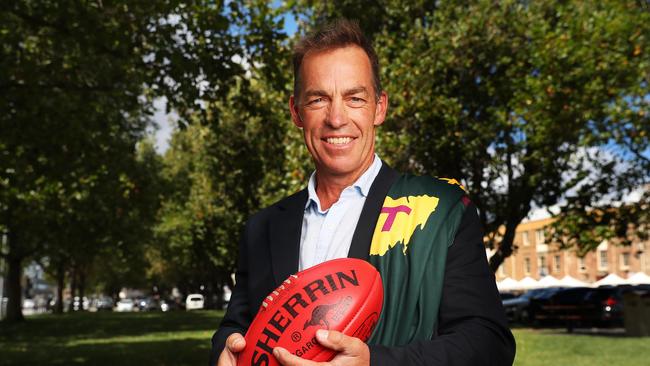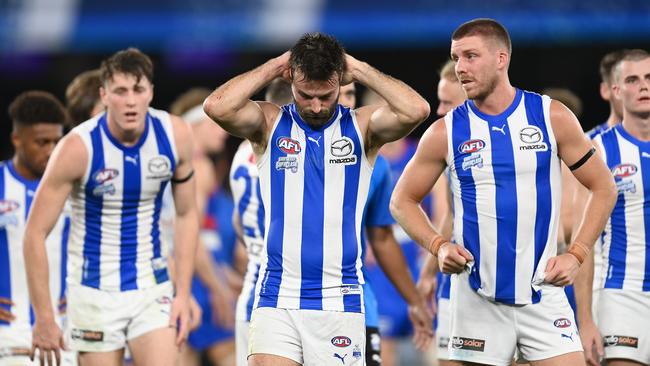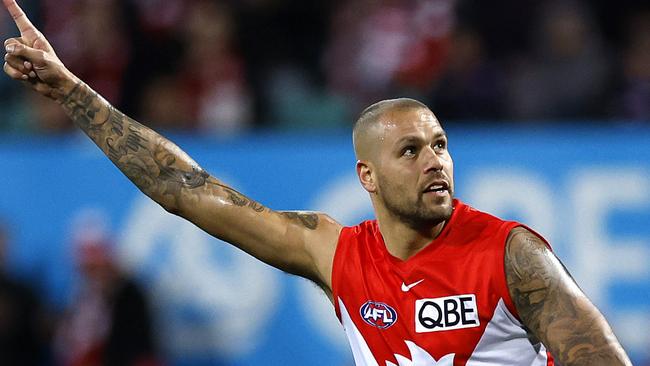Mick Malthouse: Reasons why Tasmanian AFL team must be relocated
Mick Malthouse is a Tassie team supporter, but he believes there are several reasons why it should come from a current AFL club.

AFL
Don't miss out on the headlines from AFL. Followed categories will be added to My News.
I am a Team Tassie supporter and have been for years.
I’m not quite prepared to say it’s an AFL obligation to have a Tasmanian team in the competition. But it is a national league, and unlike other sporting codes around the world, we have 10 teams from one state in an 18-team competition, which makes it feel like we are still clinging to a distant past of suburb-versus-suburb football.
It’s time to change that, because world sport is changing.
Australia is producing more and more outstanding young male and female basketballers, with many heading to the mecca of the game in the US.
Watch every blockbuster AFL match this weekend Live & Ad-Break Free In-Play on Kayo. New to Kayo? Try 14-Days Free Now >

We are producing more world-class soccer players, too.
The Indian Premier League is certainly making the younger generation think seriously about cricket contracts compared to football dollars.
Which all means we could have a fight on our hands to get players focusing solely on an AFL career.
And already there is shortage of genuine talent.
There is absolutely no question that the current 18 teams have some elite footballers, but unfortunately the lists drop off dramatically in talent. The game is not better than it was 10 years ago. The game of 10 years ago was only marginally better than 10 years before that.
The AFL is supposed to be supported by the VFL, WAFL and the SANFL but it is well recognised within the industry that these leagues have gone backwards – particularly the VFL – therefore providing an unstable base to top-up AFL club lists.
There will always be some very good footballers to come through the draft, but there are hardly enough currently to supplement 18 teams, let alone 19, and we all know for sure and certain that the media broadcasters will want a 20th side to even up the competition and avoid byes.
So, there is but one answer.
For Tasmania to have an AFL team, it needs to be a relocated club and become the Tasmanian Kangaroos, Saints or Suns.

This will cause unbelievable angst in the football community for any one of these clubs, but the harsh reality is this: all three clubs receive an enormous amount of money from the AFL annually, just to survive.
North simply can’t attract the heavy hitters – on or off the field – to progress.
Like every other sporting organisation that has tried to make a go of it in a transitional society like the Gold Coast, the Suns have floundered.
And St Kilda has moved home base once before, and back again to Moorabbin, and still relies on financial supplements to break even.
It is no fault of the clubs, it’s just a fact of football life. Particularly in a town spread very thin by a number of big clubs who rake in the sponsorship dollars and attract the big-name players.
Yes, the Suns and the Saints are highly competitive this season, but that doesn’t reduce the debt.
Let the AFL say how much it costs them annually to keep these clubs afloat before telling the Tasmanian hopefuls that they don’t have enough money or support to run an AFL club.
A relocation means there is going to be pain along the way like there was for Fitzroy and South Melbourne supporters, but it makes for a healthier and more vigorous AFL league in the end.
In 1970, with Norm Smith coaching and Bobby Skilton captaining, South Melbourne made the finals. They did again in 1977 under Ian Stewart. But their history before transferring to Sydney was overall, abysmal.
They didn’t change the mascot of a swan or the club colours upon moving, but took on a new name to identify itself for where it was located.
Since the South Melbourne “Bloods” were established as the Sydney Swans in 1982, they have played 23 finals campaigns and won two premierships.
And the club has constantly attracted the big names – Tony Lockett, Lance Franklin, and now even possibly, Dustin Martin.

In 1987 the AFL, without a great deal of thought, allowed a side called the Brisbane Bears to join the league and play at Carrara. It was a dismal and utter failure. It had an ordinary list and despite having outstanding football administration and coaching, it nonetheless failed to win over local public support without winning games.
In late 1996, Fitzroy – who hadn’t played finals since 1987 – merged with Brisbane to become one hell of a team, called the Brisbane Lions. The junction of these two clubs, with a salary cap advantage, produced exactly what the AFL wanted – a northern AFL team that was highly competitive in the competition. So much so, it went on to become one of the greatest teams we’ve ever seen, winning the 2001, 2002, 2003 premierships.
Chris Fagan has had Brisbane in the finals since 2019. It is now a well-established, and well-run organisation that is adored by its local supporters.
Some of the South Melbourne and Fitzroy brigades fell out of love with their teams after the mergers but there are still many who support their “old” clubs. This may fade over the coming decades, but no one can argue that Brisbane and Sydney aren’t well cemented in the AFL landscape.
There is no time to hesitate in relocating a club to Tasmania by placing unnecessary hurdles in the way.
Tasmania used to be a fanatical football state, but even that is starting to change with the soaring popularity of the Jack Jumpers in the NBL.
Gillon McLachlan’s suggestion of a purpose-built stadium in Hobart seems skew-whiff to some of the grounds currently used in the AFL season. Mars Stadium in Ballarat has a venue capacity of 11,000. TIO Stadium in Darwin holds 12,500.
Manuka Oval in Canberra, 14,849. Metricon Stadium in Carrara, 22,500. Giants Stadium Sydney, 23,500. And even GMHBA Stadium in Geelong at present can only hold 36,000.
There’s no question people want modern facilities, but the Tasmanian state government has already indicated it’s prepared to invest in a new waterfront stadium in Hobart that could host a crowd of up to 30,000. So where is the issue?
One only needs to look as far as the likes of Darrel Baldock, Royce Hart, Peter Hudson, and Ian Stewart, to see the level of football talent that comes from our most southern state. They are all bona fide legends of the game.
Matthew Richardson, Rodney Eade, Jack Riewoldt, Paul Williams, and Michael Roach are all proud Tasmanians too.
The stage is set. It’s time for the AFL to make the hard call to ensure the longevity of our national competition.
More Coverage
Originally published as Mick Malthouse: Reasons why Tasmanian AFL team must be relocated





